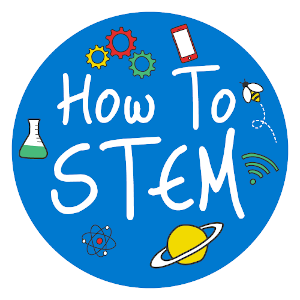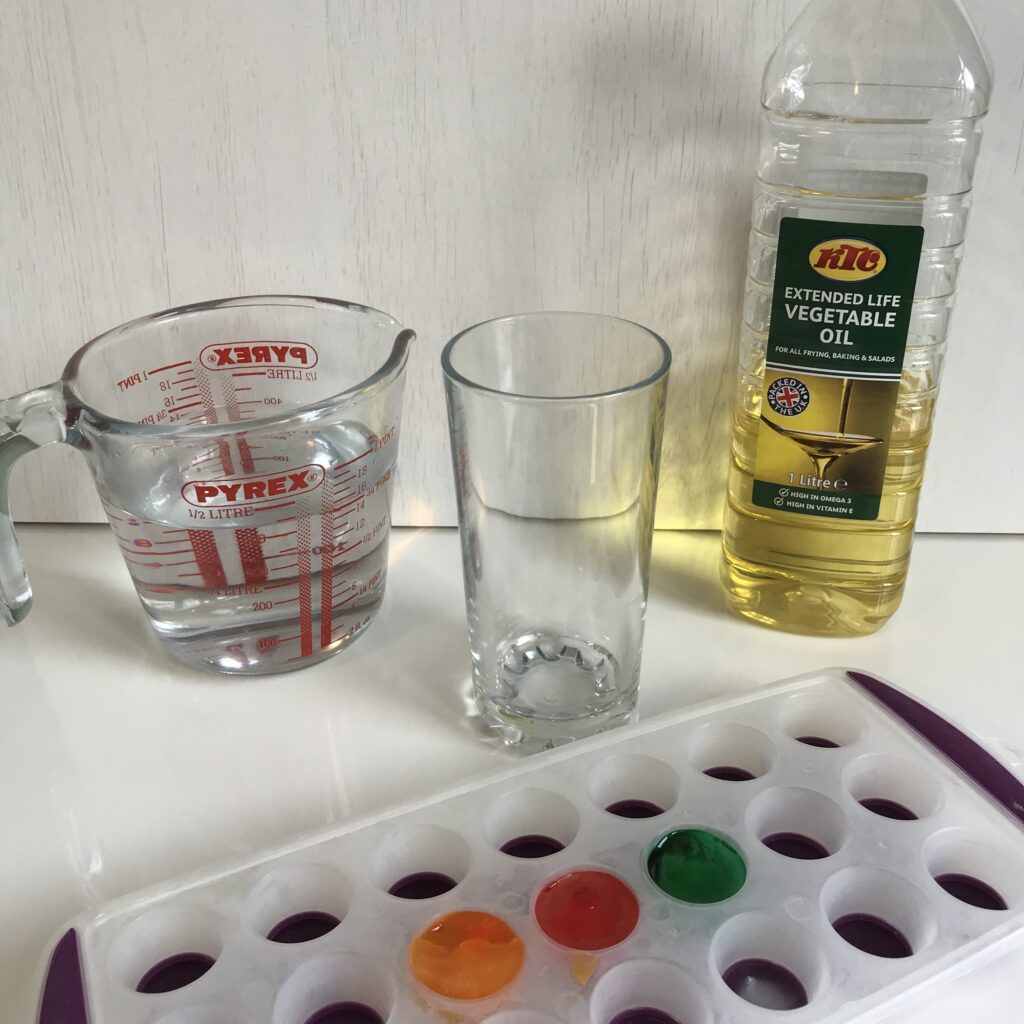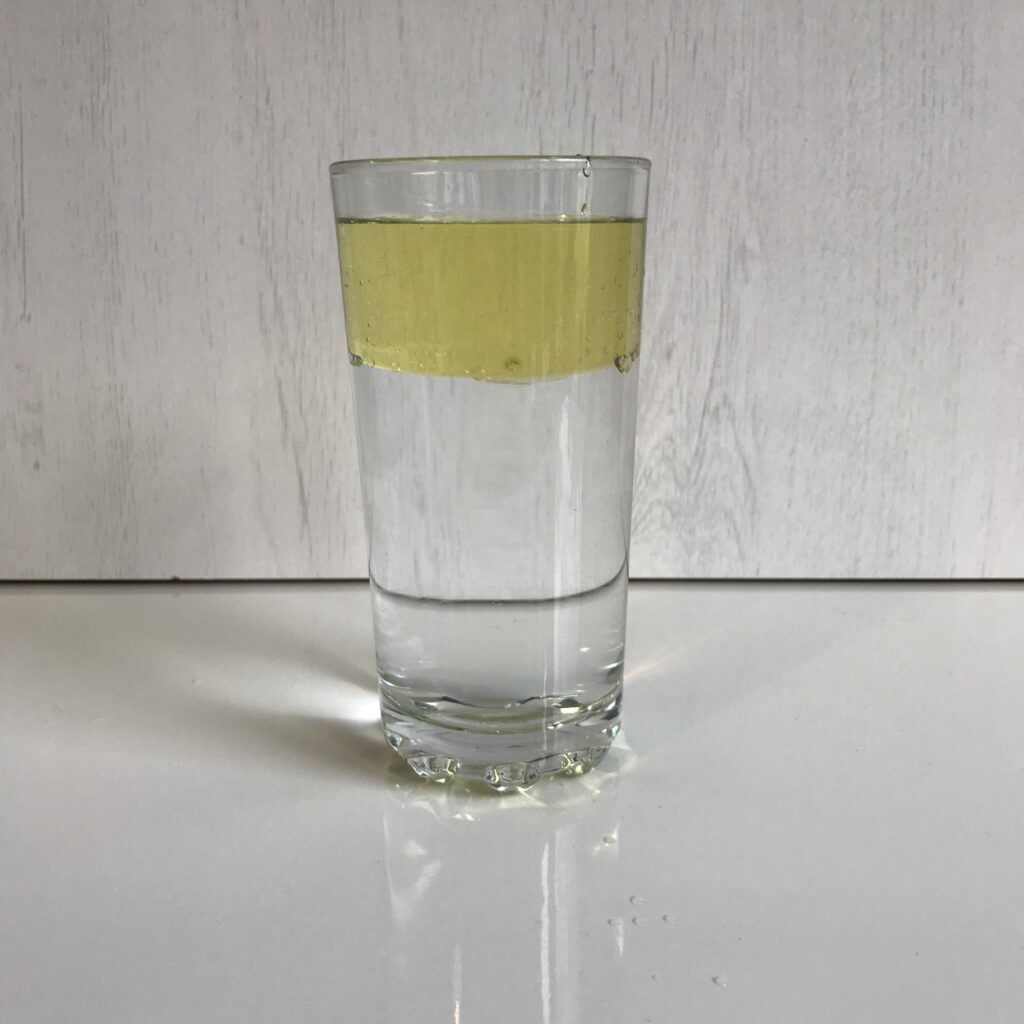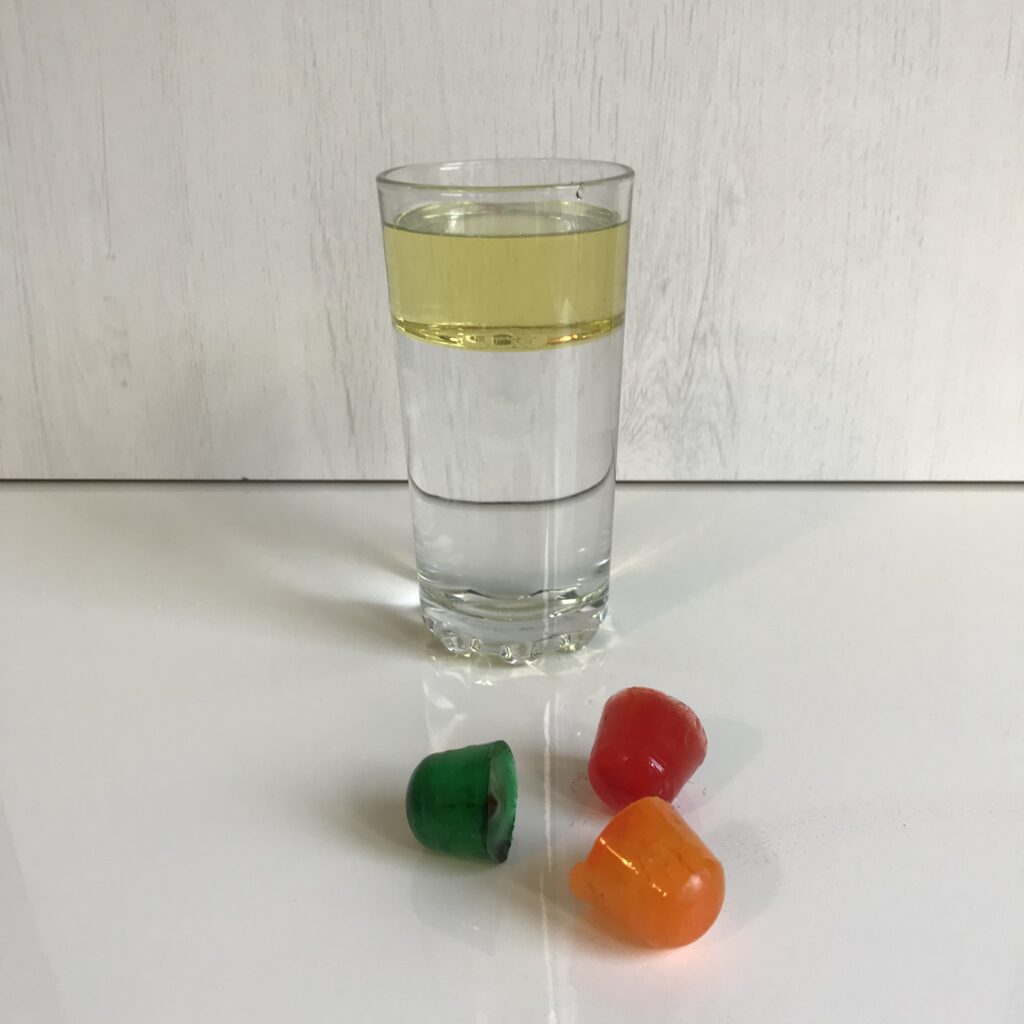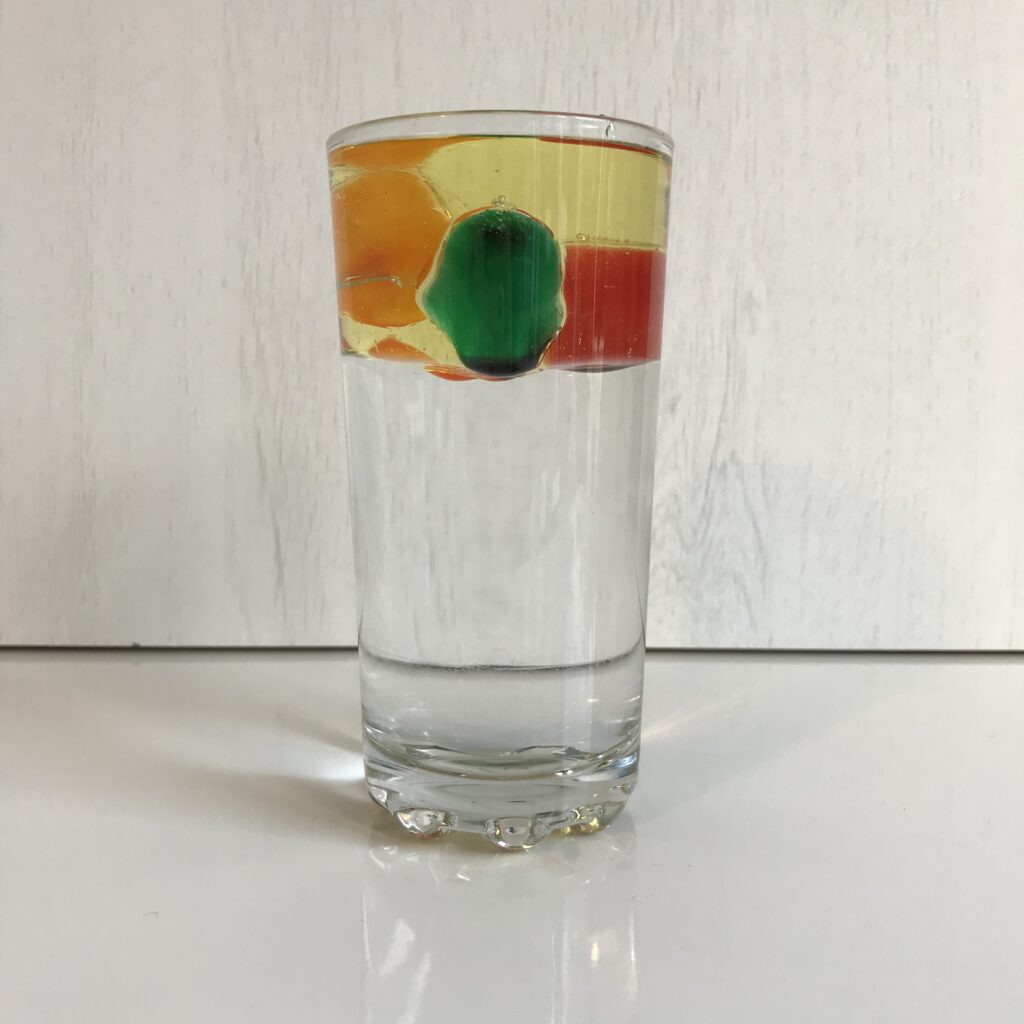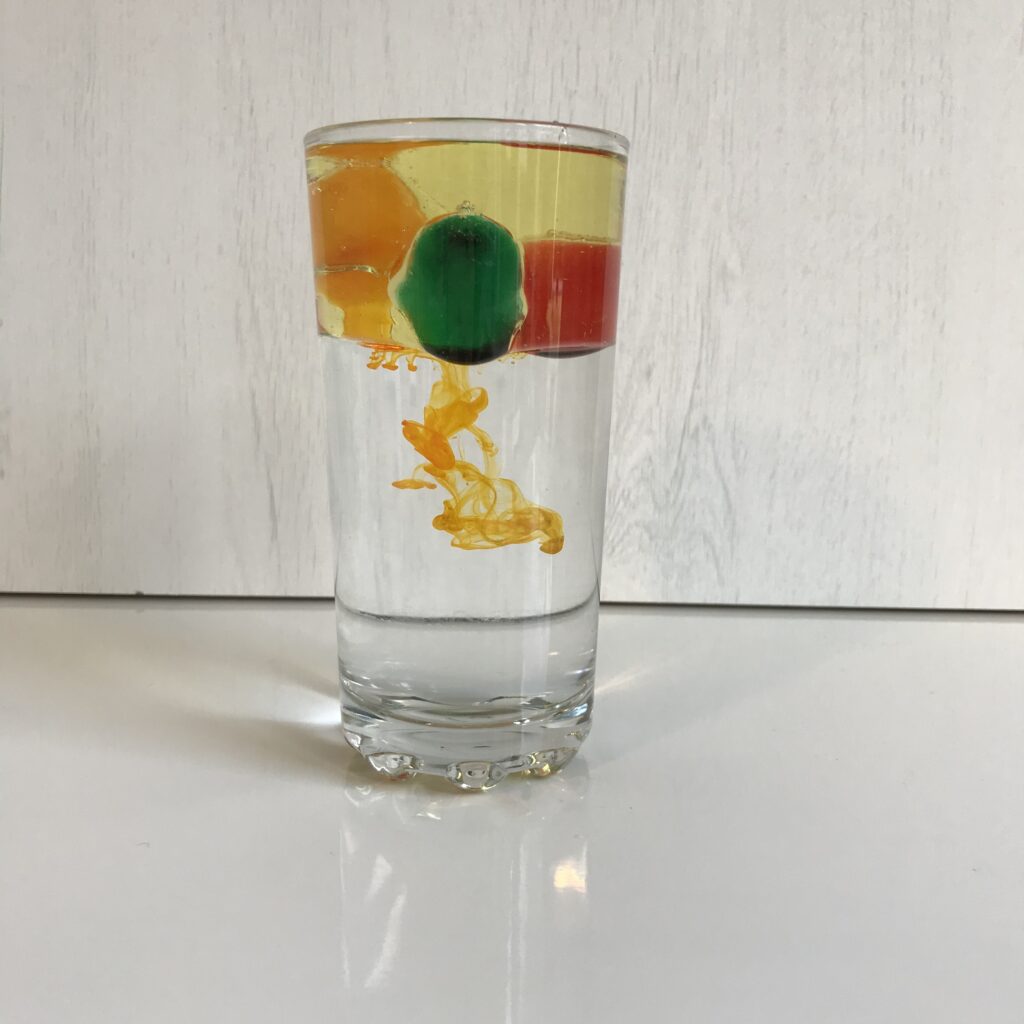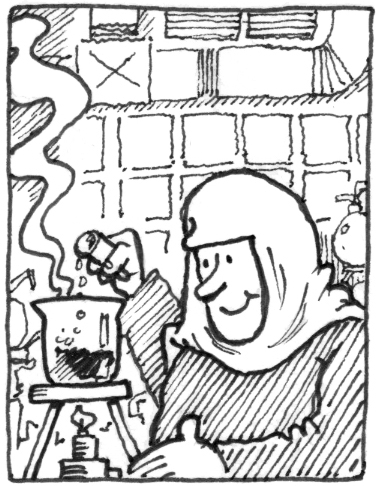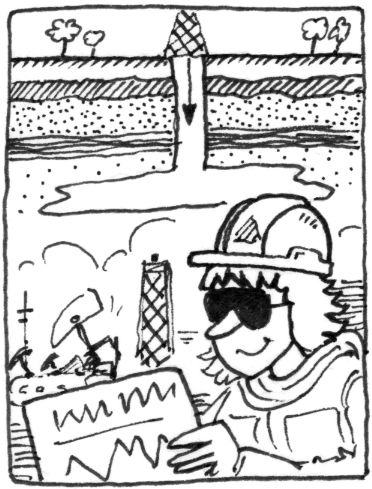
Frozen Fireworks
What happens when we mix fluids of different densities?
You will need
How to do it
Note: you will need to prepare the ice cubes in advance of the activity.
- Fill up an ice cube tray with water. Add a few drops of food colouring to each ice cube mould, either by squeezing them from the bottle or using a pipette. Then place the tray in the freezer for a few hours.
- Once the ice cubes are frozen, part-fill your jar with warm water, leaving space at the top.
- Then add a 2cm layer of vegetable oil. You will notice that the oil floats on top of the water.
- Place the ice cubes into the jar and watch them float in the oil layer.
- Watch as the ice melts and the coloured droplets sink down into the water and mix together, creating fireworks!
What are we learning
Density is the mass of an object divided by its volume. Put another way, it is the amount of ‘stuff’ that can fit in a given space. Some materials are very light for their size while others are very heavy. For example, a brick and a sponge might be a similar size but the sponge would be a lot lighter. This is because it is less dense. Oil is less dense than water so it floats to the top of the jar. The ice cubes are also less dense than the water, which is why they float in the oil layer. As the ice melts and turns into liquid, it becomes denser than the oil. This causes the food colouring droplets to sink into the water and diffuse (spread out), creating what looks like fireworks.
Investigate
Now try adding other fluids to your jar, such as honey or milk. How do their densities compare to water and vegetable oil?
